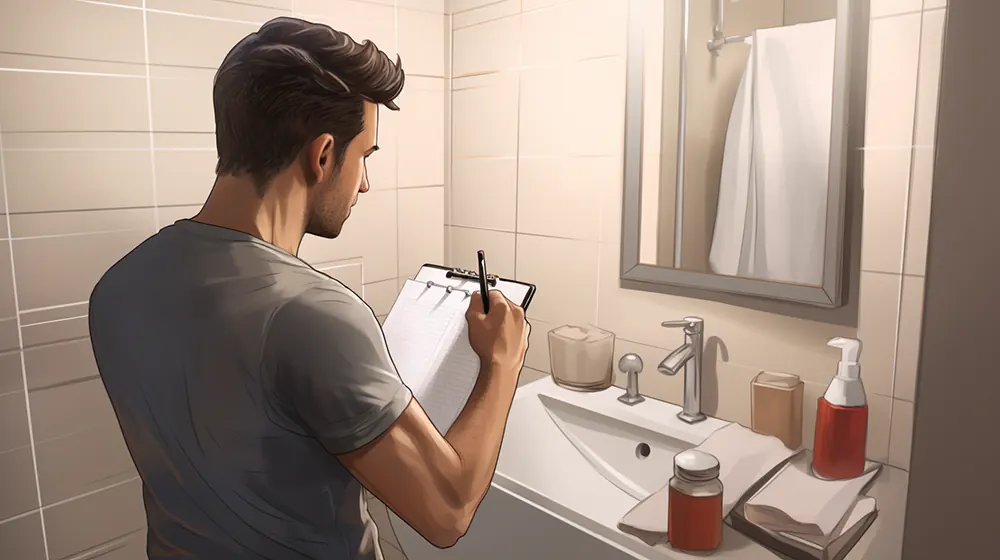
Introduction
The bathroom is not only a functional space but also one of the most important rooms in a house. A well-designed and thoughtfully planned bathroom can significantly enhance the overall value and appeal of a home. However, embarking on a bathroom remodeling project can be overwhelming and daunting, especially if you are not adequately prepared.
That’s why it’s crucial to have a comprehensive bathroom remodel checklist in place before starting any bathroom renovations. This checklist should include considerations such as the desired layout, fixtures and fittings, storage options, lighting, ventilation, and any specific requirements or preferences you may have.
By having a detailed checklist, you can ensure that you cover all the necessary aspects of your bathroom renovation, making the process more manageable and ensuring that the end result meets your expectations. So, before diving into your bathroom remodel project, take the time to create a checklist and plan out every detail for a successful and satisfying renovation experience.
Initial Planning Stage
Define your Budget

The first and most crucial step before you start remodeling is to determine your budget. This will dictate the scope of your remodel and what elements you can afford to include. It’s essential to be realistic about your budget and account for any unexpected costs that may arise during the process.
Consider all the elements you want to include in your bathroom, such as new bathroom fixtures, lighting, walk-in shower, double sinks and labor costs. Research the average costs for these items in your area to get a better idea of what you can afford.
Assess your Needs and Wants
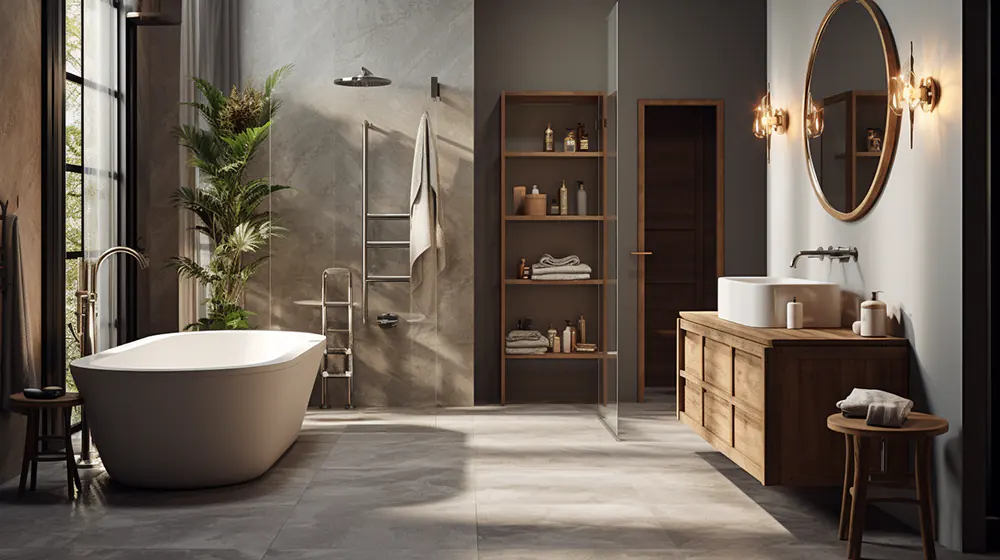
Next, make a list of what you need and want in your new bathroom. Your needs should take priority over your wants, but it’s still essential to consider both. Some necessary elements may include a new toilet, shower door, or bathtub, while some of your wants may include a luxurious rain showerhead or heated shower floors.
Also, consider any specific needs you may have, such as accessibility features for elderly family members or young children. This will help guide your choices and ensure that your bathroom is functional and practical for everyone in your household, regardless if it’s a guest bathroom or a personal bathroom.
Plan the Layout
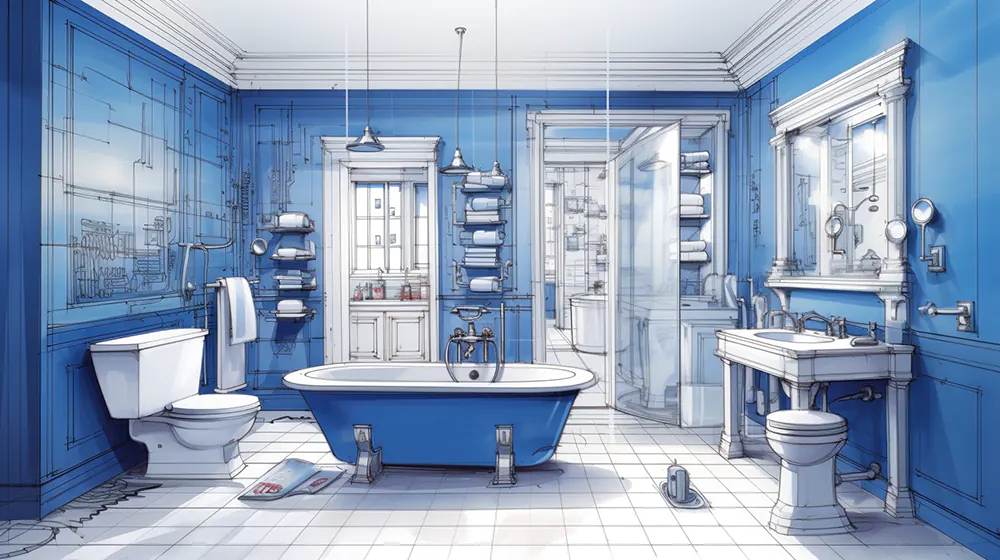
Deciding on a layout for your bathroom is crucial, as it will determine the flow and functionality of the space. Consider factors such as the location of existing plumbing, natural light sources, and any structural limitations.
You may want to consult with a remodeling professional or use online design tools to help you create an optimal floor plan for your bathroom makeover. Remember to keep in mind your needs and wants as well as your budget when making these decisions.
Plan for Storage
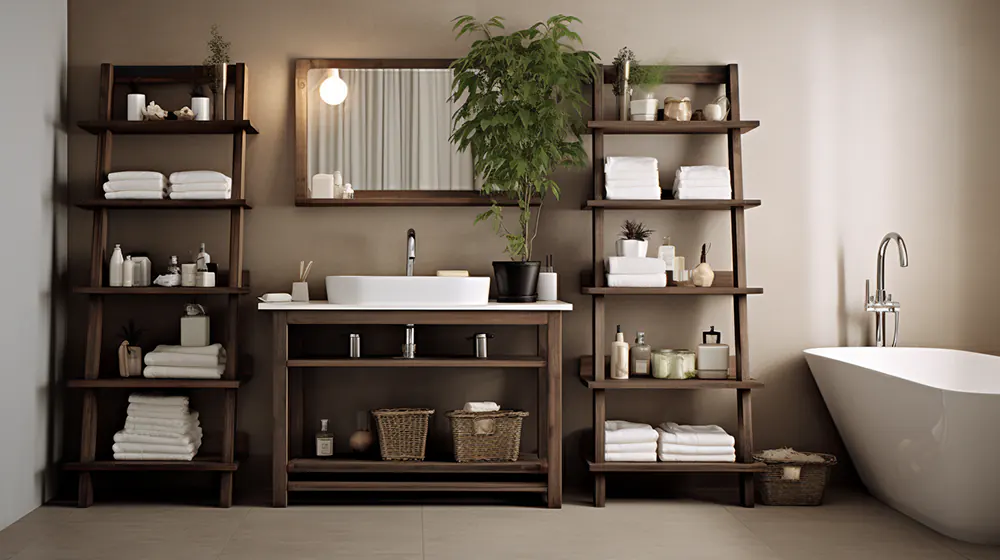
Storage space, including bathroom vanity, is another important aspect to consider in your bathroom renovation. Think about what items you need to store, such as towels, toiletries, and cleaning supplies, and plan accordingly.
This may include adding shelves or cabinets above the toilet or incorporating a linen closet or new vanity into your design. Don’t forget to also consider storage options within the new shower or bath area, such as built-in niches or a corner caddy. This will help keep your bathroom clutter-free and organized.
Design Stage
Hiring an Interior Designer

While you may have a clear vision of your dream bathroom, hiring an interior designer can help bring this vision to life. Most contractors do not possess the expertise and experience that an interior designer has in creating a cohesive, stylish, and functional design style that complements the rest of your home.
They can offer innovative solutions to overcome any design challenges, help with space planning, color schemes, and lighting design, and even assist in selecting the perfect fixtures and fittings for your bathroom. Moreover, they have industry connections that can potentially save you money and time.
While hiring an interior designer might seem like an additional expense, their guidance can prevent costly mistakes and ensure the end result is a well-designed bathroom remodel that meets your needs and enhances the value of your home.
Choose Fixtures and Fittings
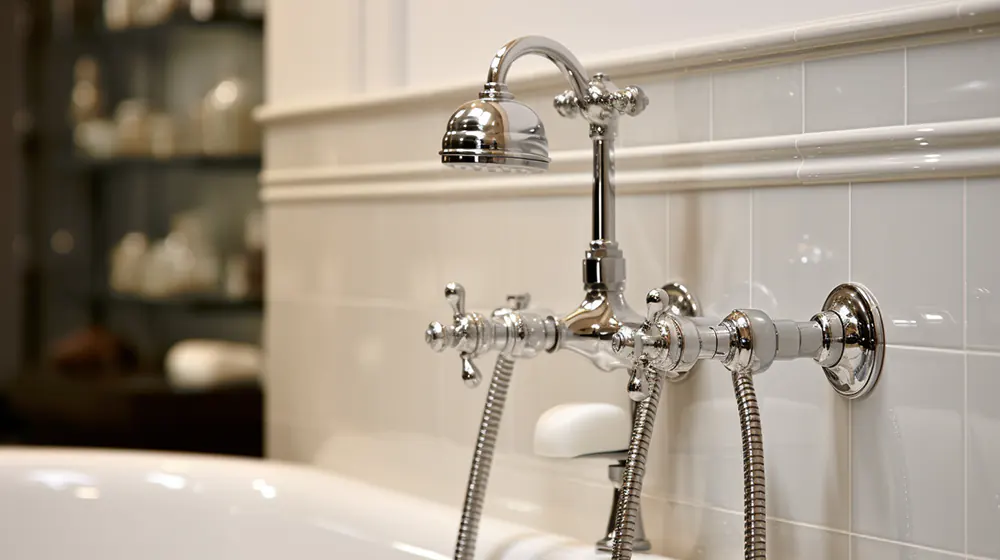
Once you have a layout in place, it’s time to choose the fixtures and fittings for your bathroom. These include items such as sinks, toilets, showers, bathtubs, faucets, and cabinets. When selecting these elements, make sure they fit within your budget and complement the overall aesthetic of your bathroom.
It’s also essential to consider the functionality of these items. For example, if you have a small space, a pedestal sink may be more practical than a larger vanity with limited storage.
Consider Lighting and Ventilation

Lighting and ventilation are often overlooked in bathroom remodels, but they play a crucial role in the overall comfort and functionality of the space. Make sure to include both natural and artificial lighting sources, such as windows and overhead lights, as well as task lighting around the vanity or shower.
Proper ventilation is also essential to prevent mold and mildew buildup in your bathroom. Consider installing an exhaust fan or adding a window if possible to improve air circulation.
Choose Materials

The materials you choose for your bathroom remodel can make a significant impact on the overall look and feel of the space. Consider factors such as durability, maintenance, and cost when selecting materials for tile floor, shower walls, countertops, and backsplashes.
It’s also essential to keep a cohesive aesthetic in mind when choosing materials. You want all elements of your bathroom to work together harmoniously for a visually appealing space.
Construction Stage
Hire Professionals
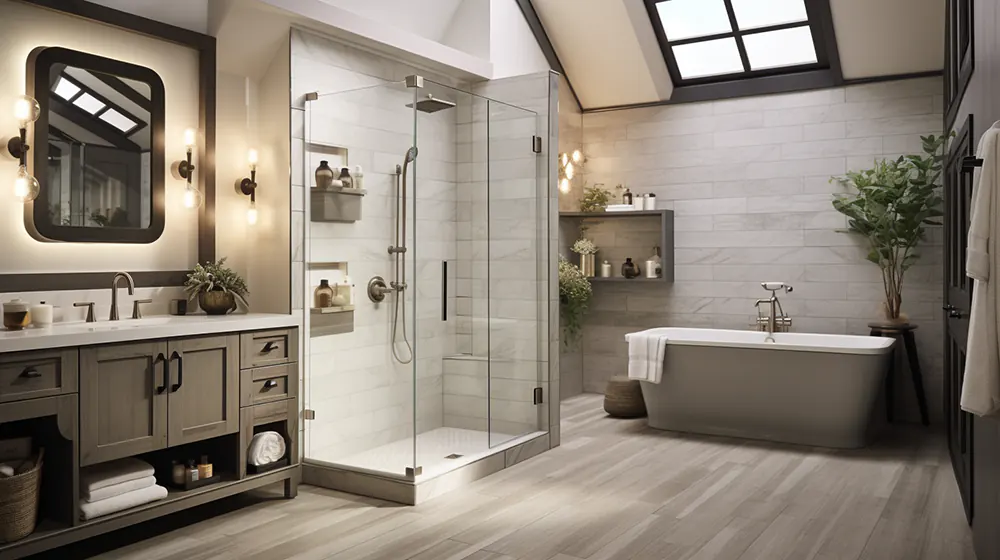
Depending on the scope of your remodel, you may need to hire professionals, such as a general contractor, for certain tasks such as plumbing or electrical work. It’s crucial to do your research and choose reputable contractors who have experience in bathroom renovations.
Make sure to get quotes from multiple contractors and ask for references before making a decision. This will help ensure that you are getting quality work within your budget.
Demolition and Preparation
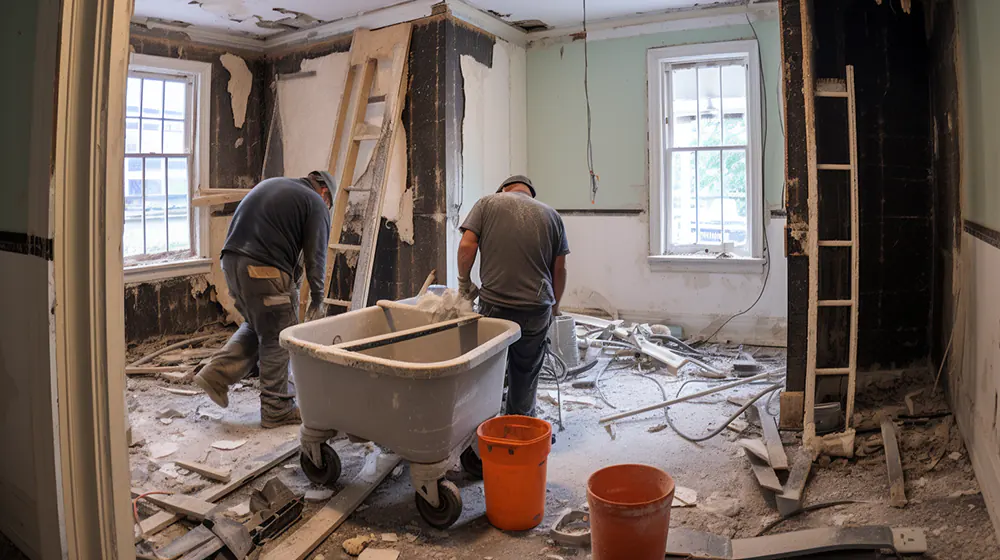
Before any construction can begin, the existing bathroom will need to be demolished and prepared for the remodel. This may involve removing fixtures, tearing out walls or flooring, and repairing any structural damage.
It’s essential to have a clear plan in place before starting demolition to avoid any potential setbacks during the construction phase.
Installation
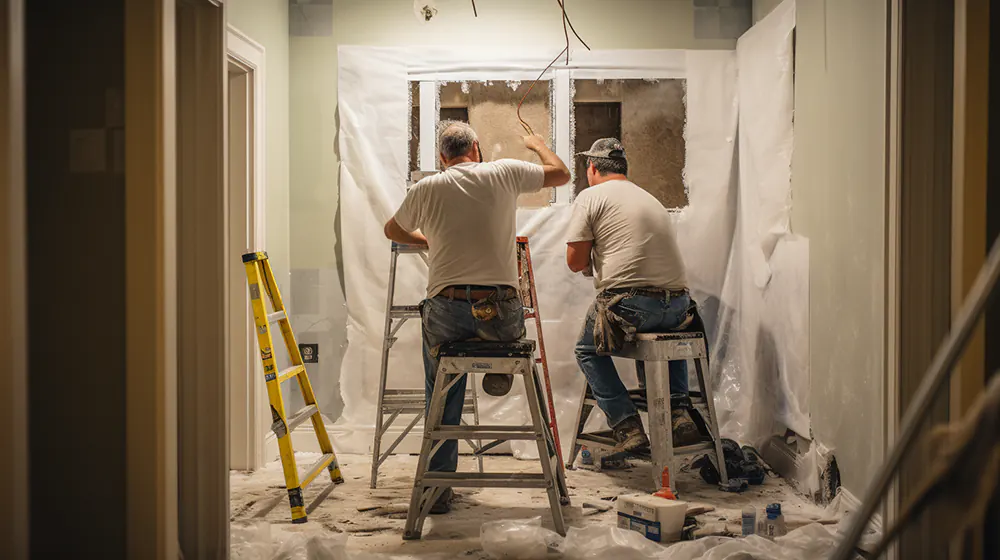
Once demolition is complete, the installation process can begin. This may involve plumbing, electrical work, flooring installation, and cabinetry installation.
It’s crucial to have regular check-ins with your contractor during this stage to ensure that the project is progressing smoothly and any issues are addressed promptly.
Be Aware of Complications Arising
As with any construction project, including other remodeling jobs, unforeseen complications may arise during the remodeling process, including issues with plumbing pipes. This could be anything from a plumbing issue to discovering mold or structural damage.
It’s important to remain flexible and have contingency plans in place for such situations. Communicate openly with your contractor and be prepared to make necessary adjustments to the design or budget if needed.
Final Touches

Add Personal Touches
Once the construction is complete, it’s time to add personal touches that will make your new space feel like home. This could include decorative elements such as artwork, plants, and accessories that reflect your style and personality.
You may also want to consider incorporating practical elements such as storage solutions or organization systems that will help keep your bathroom tidy and functional.
Maintain Your New Bathroom
After all the hard work and investment put into your bathroom remodel, it’s crucial to maintain it properly. This includes regular cleaning, upkeep, promptly addressing any issues, and taking proactive measures to prevent potential problems.
Regular maintenance will not only keep your room looking and functioning at its best, but it will also help prevent costly repairs in the future. So, keep up with the good work and make sure to stay on top of your bathroom’s care and maintenance routine!
Frequently Asked Questions
How long does a bathroom remodel typically take?
The timeline for a bathroom remodel can vary depending on the scope of the project and the square footage. On average, a full remodel of a bathroom with a normal amount of square footage can take anywhere from 4 to 6 weeks, or even longer in some cases.
How much does a bathroom remodel cost?
The cost of a bathroom remodel can vary greatly depending on factors such as materials, whether you hire a general contractor or not, and the extent of the project. On average, full bathroom remodels can range from $5,000 to $25,000, with any additional cost is possible. It’s important to set a budget and stick to it when planning your remodel. Check out one of our other blogs The Bathroom Remodel Cost in Sacramento to get a better breakdown on a recommended Bathroom remodeling budget.
What are window treatments?
Window treatments refer to any type of covering or treatment for windows, such as curtains, blinds, or shutters. These can add both aesthetic appeal and functionality to a bathroom by controlling the amount of light and privacy in the space.
Does a bathroom renovation help your resale value go up?
A well-executed bathroom renovation can add significant value to your home, making it a smart investment for resale purposes. According to Remodeling Magazine’s Cost vs. Value report, an average bathroom remodel return on investment or ROI is about 60-70%. However, it’s important to consider the cost and scope of the project about the potential increase in resale value. So, make sure to do your research and consult with a real estate professional before starting your bathroom remodel.

Conclusion
Bathroom remodeling is a significant investment that can greatly improve the functionality and aesthetic of your home. By following these steps and working with professionals such as ourselves at AAremodels, you can create a beautiful and functional bathroom that meets your needs and adds value to your home.
Many homeowners can be afraid to get creative but make sure you add personal touches to truly make the room your own. Adding art to the walls, adding a new sink, or even removing walls can help make it personal. With regular maintenance and upkeep, your newly remodeled bathroom will continue to be a space you can enjoy for years to come.
So, whether you’re looking to update an outdated bathroom or create a luxurious spa-like retreat, these tips will help guide you through the process and ensure a successful remodel. Remember, even the smallest rooms can look like a thousand dollars when you plan, collaborate, and stay committed to your vision.
CONTACT US
Our Services
Areas We Serve
Certificate






